#excursion steamer
Text

TASHMOO (steel side-wheel excursion steamer, 308 foot, 1,344 gross tons, built in 1900, at Wyandotte, Michigan) entered regular service for the White Star Line at Detroit, Michigan, on 11 June 1900.
18 notes
·
View notes
Text
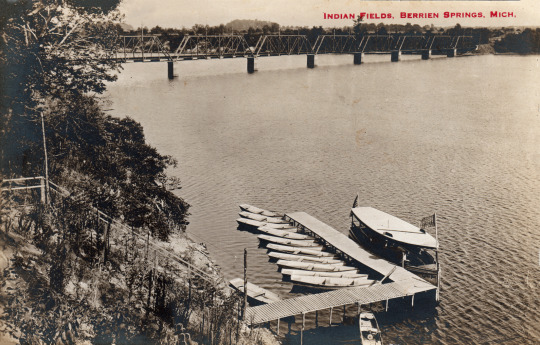
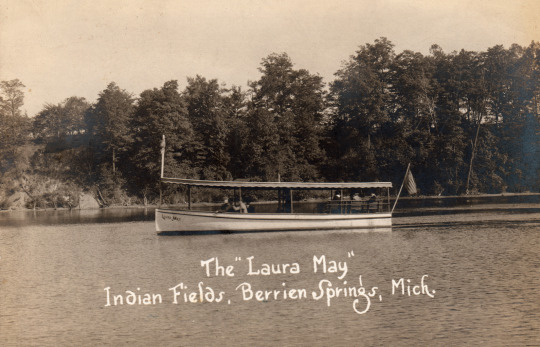

The Laura May excursion steamer out of Indian Fields. These pictures were taken sometime after 1909. You'll notice the interurban bridge in the background
0 notes
Text
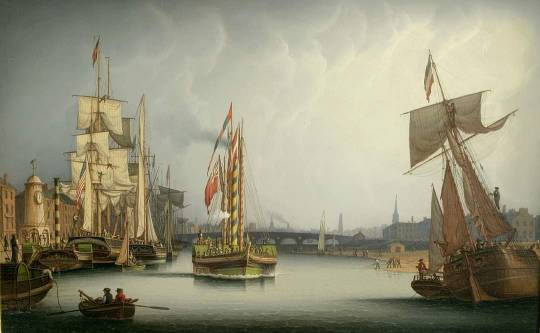
Glasgow excursion Steamers and American Ship on the Clyde, by Robert Salmon, 28th September 1832
77 notes
·
View notes
Text

whale back excursion steamer
postcard ca. 1900s
8 notes
·
View notes
Text

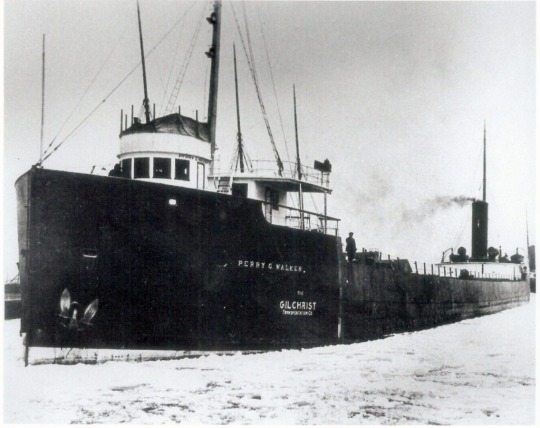

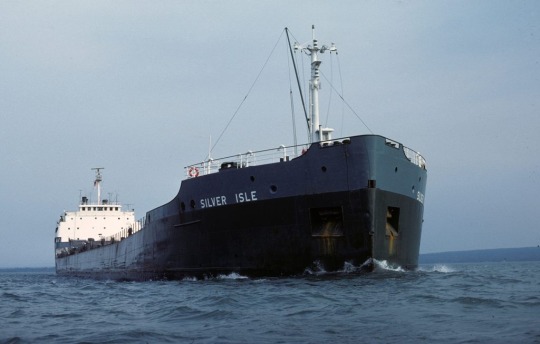
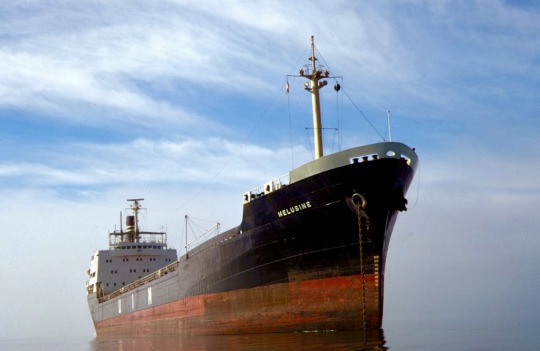
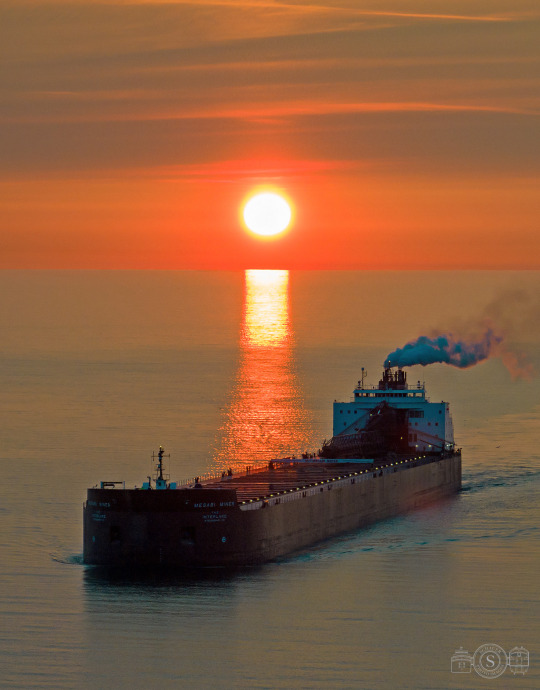
Today in Great Lakes shipping history. June 9th.
1900: TASHMOO (steel side-wheel excursion steamer, 308 foot, 1,344 gross tons, built in 1900, at Wyandotte, Michigan) hosted Admiral George Dewey on her inaugural trip from Cleveland, Ohio, to Detroit, Michigan, on 09 June 1900. Admiral Dewey had just returned from his conquest of the Philippines during the Spanish American War and was a national hero. TASHMOO entered regular service for the White Star Line two days later.
1909: ASSINIBOIA and CRESCENT CITY were washed through the Canadian Lock at Sault Ste. Marie when the upbound PERRY G. WALKER struck the lower gate. All three ships were damaged but were repaired and returned to service.
1938: The GOVERNOR MILLER (Hull#810) a sister ship to the WILLIAM A. IRVIN, began her maiden voyage, leaving Lorain, Ohio. The GOVERNOR MILLER was only the second Great Lakes vessel to be powered by a steam turbine with a direct drive to the propeller shaft via reduction gear.
1963: The newly built SILVER ISLE of Mohawk Navigation and the PRINS ALEXANDER of the Oranje Line, collided in fog and rain on the St. Lawrence near Kingston. Both ships required repairs.
1979: The French freighter MELUSINE first came to the Great Lakes in 1962 and returned as b) LENA in 1978. It sank the French fishing vessel ANTIOCHE III in the English Channel with the loss of 4 lives on this day in 1979. LENA was scrapped at Ferrol, Spain, in 1982, after suffering engine damage on a voyage from Bilbao, Spain, to Detroit.
2023: The sun rises over Lake Superior as Mesabi Miner arrives to load ore.
Boat Nerd
36 notes
·
View notes
Text
November 7th, 1872: sail away
When Passepartout did not appear the next morning to answer his master’s bell, Mr. Fogg, not betraying the least vexation, contented himself with taking his carpet-bag, calling Aouda, and sending for a palanquin.
It was then eight o’clock; at half-past nine, it being then high tide, the “Carnatic” would leave the harbour. Mr. Fogg and Aouda got into the palanquin, their luggage being brought after on a wheelbarrow, and half an hour later stepped upon the quay whence they were to embark. Mr. Fogg then learned that the “Carnatic” had sailed the evening before. He had expected to find not only the steamer, but his domestic, and was forced to give up both; but no sign of disappointment appeared on his face, and he merely remarked to Aouda, “It is an accident, madam; nothing more.”
At this moment a man who had been observing him attentively approached. It was Fix, who, bowing, addressed Mr. Fogg: “Were you not, like me, sir, a passenger by the ‘Rangoon,’ which arrived yesterday?”
“I was, sir,” replied Mr. Fogg coldly. “But I have not the honour—”
“Pardon me; I thought I should find your servant here.”
“Do you know where he is, sir?” asked Aouda anxiously.
“What!” responded Fix, feigning surprise. “Is he not with you?”
“No,” said Aouda. “He has not made his appearance since yesterday. Could he have gone on board the ‘Carnatic’ without us?”
“Without you, madam?” answered the detective. “Excuse me, did you intend to sail in the ‘Carnatic’?”
“Yes, sir.”
“So did I, madam, and I am excessively disappointed. The ‘Carnatic’, its repairs being completed, left Hong Kong twelve hours before the stated time, without any notice being given; and we must now wait a week for another steamer.”
As he said “a week” Fix felt his heart leap for joy. Fogg detained at Hong Kong for a week! There would be time for the warrant to arrive, and fortune at last favoured the representative of the law. His horror may be imagined when he heard Mr. Fogg say, in his placid voice, “But there are other vessels besides the ‘Carnatic,’ it seems to me, in the harbour of Hong Kong.”
And, offering his arm to Aouda, he directed his steps toward the docks in search of some craft about to start. Fix, stupefied, followed; it seemed as if he were attached to Mr. Fogg by an invisible thread. Chance, however, appeared really to have abandoned the man it had hitherto served so well. For three hours Phileas Fogg wandered about the docks, with the determination, if necessary, to charter a vessel to carry him to Yokohama; but he could only find vessels which were loading or unloading, and which could not therefore set sail. Fix began to hope again.
But Mr. Fogg, far from being discouraged, was continuing his search, resolved not to stop if he had to resort to Macao, when he was accosted by a sailor on one of the wharves.
“Is your honour looking for a boat?”
“Have you a boat ready to sail?”
“Yes, your honour; a pilot-boat—No. 43—the best in the harbour.”
“Does she go fast?”
“Between eight and nine knots the hour. Will you look at her?”
“Yes.”
“Your honour will be satisfied with her. Is it for a sea excursion?”
“No; for a voyage.”
“A voyage?”
“Yes, will you agree to take me to Yokohama?”
The sailor leaned on the railing, opened his eyes wide, and said, “Is your honour joking?”
“No. I have missed the ‘Carnatic,’ and I must get to Yokohama by the 14th at the latest, to take the boat for San Francisco.”
“I am sorry,” said the sailor; “but it is impossible.”
“I offer you a hundred pounds per day, and an additional reward of two hundred pounds if I reach Yokohama in time.”
“Are you in earnest?”
“Very much so.”
The pilot walked away a little distance, and gazed out to sea, evidently struggling between the anxiety to gain a large sum and the fear of venturing so far. Fix was in mortal suspense.
Mr. Fogg turned to Aouda and asked her, “You would not be afraid, would you, madam?”
“Not with you, Mr. Fogg,” was her answer.
The pilot now returned, shuffling his hat in his hands.
“Well, pilot?” said Mr. Fogg.
“Well, your honour,” replied he, “I could not risk myself, my men, or my little boat of scarcely twenty tons on so long a voyage at this time of year. Besides, we could not reach Yokohama in time, for it is sixteen hundred and sixty miles from Hong Kong.”
“Only sixteen hundred,” said Mr. Fogg.
“It’s the same thing.”
Fix breathed more freely.
“But,” added the pilot, “it might be arranged another way.”
Fix ceased to breathe at all.
“How?” asked Mr. Fogg.
“By going to Nagasaki, at the extreme south of Japan, or even to Shanghai, which is only eight hundred miles from here. In going to Shanghai we should not be forced to sail wide of the Chinese coast, which would be a great advantage, as the currents run northward, and would aid us.”
“Pilot,” said Mr. Fogg, “I must take the American steamer at Yokohama, and not at Shanghai or Nagasaki.”
“Why not?” returned the pilot. “The San Francisco steamer does not start from Yokohama. It puts in at Yokohama and Nagasaki, but it starts from Shanghai.”
“You are sure of that?”
“Perfectly.”
“And when does the boat leave Shanghai?”
“On the 11th, at seven in the evening. We have, therefore, four days before us, that is ninety-six hours; and in that time, if we had good luck and a south-west wind, and the sea was calm, we could make those eight hundred miles to Shanghai.”
“And you could go—”
“In an hour; as soon as provisions could be got aboard and the sails put up.”
“It is a bargain. Are you the master of the boat?”
“Yes; John Bunsby, master of the ‘Tankadere.’”
“Would you like some earnest-money?”
“If it would not put your honour out—”
“Here are two hundred pounds on account sir,” added Phileas Fogg, turning to Fix, “if you would like to take advantage—”
“Thanks, sir; I was about to ask the favour.”
“Very well. In half an hour we shall go on board.”
“But poor Passepartout?” urged Aouda, who was much disturbed by the servant’s disappearance.
“I shall do all I can to find him,” replied Phileas Fogg.
While Fix, in a feverish, nervous state, repaired to the pilot-boat, the others directed their course to the police-station at Hong Kong. Phileas Fogg there gave Passepartout’s description, and left a sum of money to be spent in the search for him. The same formalities having been gone through at the French consulate, and the palanquin having stopped at the hotel for the luggage, which had been sent back there, they returned to the wharf.
It was now three o’clock; and pilot-boat No. 43, with its crew on board, and its provisions stored away, was ready for departure.
The “Tankadere” was a neat little craft of twenty tons, as gracefully built as if she were a racing yacht. Her shining copper sheathing, her galvanised iron-work, her deck, white as ivory, betrayed the pride taken by John Bunsby in making her presentable. Her two masts leaned a trifle backward; she carried brigantine, foresail, storm-jib, and standing-jib, and was well rigged for running before the wind; and she seemed capable of brisk speed, which, indeed, she had already proved by gaining several prizes in pilot-boat races. The crew of the “Tankadere” was composed of John Bunsby, the master, and four hardy mariners, who were familiar with the Chinese seas. John Bunsby, himself, a man of forty-five or thereabouts, vigorous, sunburnt, with a sprightly expression of the eye, and energetic and self-reliant countenance, would have inspired confidence in the most timid.
Phileas Fogg and Aouda went on board, where they found Fix already installed. Below deck was a square cabin, of which the walls bulged out in the form of cots, above a circular divan; in the centre was a table provided with a swinging lamp. The accommodation was confined, but neat.
“I am sorry to have nothing better to offer you,” said Mr. Fogg to Fix, who bowed without responding.
The detective had a feeling akin to humiliation in profiting by the kindness of Mr. Fogg.
“It’s certain,” thought he, “though rascal as he is, he is a polite one!”
The sails and the English flag were hoisted at ten minutes past three. Mr. Fogg and Aouda, who were seated on deck, cast a last glance at the quay, in the hope of espying Passepartout. Fix was not without his fears lest chance should direct the steps of the unfortunate servant, whom he had so badly treated, in this direction; in which case an explanation the reverse of satisfactory to the detective must have ensued. But the Frenchman did not appear, and, without doubt, was still lying under the stupefying influence of the opium.
John Bunsby, master, at length gave the order to start, and the “Tankadere,” taking the wind under her brigantine, foresail, and standing-jib, bounded briskly forward over the waves.
27 notes
·
View notes
Text


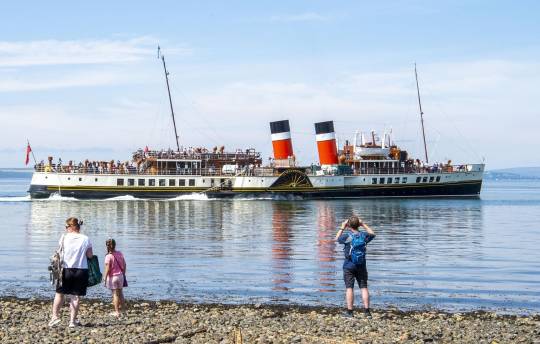

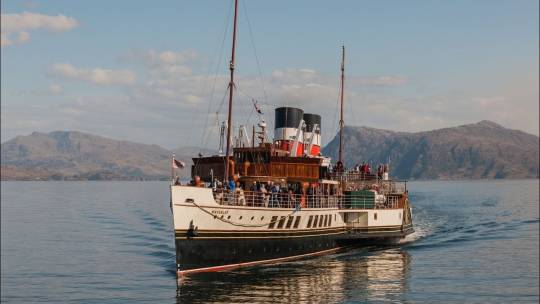
On October 2nd 1947 the paddle steamer Waverley was launched from A. & J. Inglis’s yard on the Clyde.
The Waverley is now the last sea-going passenger paddle steamer anywhere in the world. She was named after the debut novel of Sir Walter Scott, but wasn’t the first paddle steamer to bear the name. The previous Waverley, built in 1899, had been requisitioned as a minesweeper during World War II and sank during the Dunkirk evacuation in 1940.
Materials were so scarce in post-war Britain that the new Waverley had to wait more than three months after her launch to have the boiler and engines installed. She finally entered service in June 1947, sailing a scenic route up Loch Long to Arrochar.
Ownership of the Waverley passed to the Caledonian Steam Packet Company in 1948. Between 1949 and 1964 she had a variety of winter duties, often replacing another ship that was being overhauled, or she was the spare vessel ready to cover for others in an emergency. In the main season, her routes were extended to include the Isle of Arran in 1953 and from 1958 onwards, there was also a cruise up the Clyde to Glasgow. By 1970, she was the last seagoing paddle steamer in the world. By 1971, Waverley was one of only two large excursion vessels left on the Clyde and was based at Gourock. In 1973, CSP became part of Caledonian MacBrayne Ltd
Waverley was sold on 8 August 1974 to the Paddle Steamer Preservation Society and refitted for the Waverley Steam Navigation Company. In 1975, she re-entered service on the Clyde, sailing at weekends from Glasgow and in mid-week from Ayr. In 1977, she spent a week on excurisions from Liverpool and the success of this led to over a month being spent on the South Coast in the following year. In 1981, she was fitted with a new boiler and embarked on her first full season of Round Britain cruising, with the peak summer weeks spent back on the Clyde.
In her 1990/91 winter refit, the paddle wheels were replaced and a major £7m two-stage rebuild was undertaken in early 2000 and winter 2002/03 in Great Yarmouth with the support of the National Heritage Lottery Fund. Waverley continues to be maintained in excellent condition and is the last seagoing paddle steamer in the world, fully restored and painted in her original LNER colours. She now runs cruises and charter days out around the British Isles and in 2015 celebrated 40 years of service under her current owner.
6 notes
·
View notes
Text

Clevedon Pier Symmetry .....
Clevedon Pier is a seaside pier in the town of Clevedon, Somerset, England on the east shore of the Severn Estuary. It was described by Sir John Betjeman, as "the most beautiful pier in England" and was designated a Grade I listed building in 2001.
The pier was built during the 1860s to attract tourists and provide a ferry port for rail passengers to South Wales. The pier is 312 m (1,024 ft) long and consists of eight spans supported by steel rails covered by wooden decking, with a pavilion on the pier head.
The pier opened in 1869 and served as an embarkation point for paddle steamer excursions for almost 100 years. Two of the spans collapsed during stress testing in 1970 and demolition was proposed, but local fund raising and heritage grants allowed the pier to be dismantled for restoration and reassembled. It reopened in 1989, and ten years later was awarded the Pier of the Year from the National Piers Society, and a Civic Trust Award. The pier now offers a landing stage for steamers and is a popular attraction for tourists and anglers.
51 notes
·
View notes
Text
⩥ @nothinglikegod || unresolved feelings [ask response]
The past week has been hectic, to say the least. From arguments with Wolfwood that felt like months ago, to Livio, to the Orphanage, to, currently, Ship-03, there was simply too much to process. Vash had only recently been able to get on his feet again after being laid out for several days. He'd used too much of himself to help the steamer's Plant come to a stop before hitting the Orphanage, and wound up falling unconscious. Next thing he knew, he was in a familiar room aboard Home—it wasn't a dream; all of his friends were there.
Friends.
That includes Wolfwood. After all of that, how could it not?
He's not at 100% yet. The outlaw's footsteps are heavy with fatigue and clumsy with sleep, but for the most part he can get where he wants to. This is his first excursion out of his room since being here, and perhaps the most important.
... Vash can't say that he expected to find Nicholas crying, however. It felt like too private a moment, like he shouldn't interrupt, but...
Does he truly have no one to turn to?
It's not like they encountered him with friends. Vash is aware—though others are not—that he arrived to the team with an employer and a weapon that can only be explained with relation to one party in particular. Is it a good idea to trust him? Logically, no.
But Nicholas D. Wolfwood is a good person. Vash knew from the moment he met him. He doesn't know what his objective is, he doesn't know what he's gone through, but he does know he deserves better.
Vash stays a good distance away, allowing Wolfwood his space.
"You'll always have me."
Wolfwood has taught him a lot, and Vash likes to think that he's taught him a lot in turn. As much as he hated to admit it, 'An empty promise is a lie,' lingered in his mind more than he'd like it to.
This is not an empty promise. Not in the least.
The visceral reaction doesn't surprise him, but he couldn't stay silent and let the man wither away in solitude.
He fully enters the room and allows the door to shut with a mechanical whir. Vash keeps silent as he pores over the things he can say.
"I know, and I'll leave you alone soon," his words are soft, gentle, but solid, "There's a lot I need to process too, starting with you."
Admittedly, Vash isn't used to confronting anyone about conflict or emotions—he wanders without company for good reason.
"Before... everything happened," the blond knows that Wolfwood will understand what he means, "We weren't exactly on the best terms. This might just be a job to you, I don't know exactly what your story is, and I don't think I should know, but I want you to know that to me you're a valuable friend. A partner. And, well, if you ever think that you're alone out there..."
The words are harder to say than he'd like.
"Well, I'm there for you. As long as I can be, I'll be there for you."
#tales from the typhoon#nothinglikegod#no one should have to handle this on their own#so i offer you my shoulder#// no pressure to respond to this or not!
1 note
·
View note
Photo

In the 1940's Lucille visited her hometown of Jamestown, New York. Before her arrival, the Jamestown Chamber of Commerce had written to her to ask her what she'd like to do most on her upcoming trip. 'She had written back that she'd like a long ride on the big excursion steamer she remembered riding as a child, cruising around Lake Chautauqua. "Nobody told me that the "City of Jamestown" had been at the bottom of the lake for years," she said wryly, "and when they got my letter about wanting a ride on it, they dredged it up and completely refurbished it. I got my ride on it all right, together with six hundred people, after the town had spent a fortune bringing the boat up to date!"'—The Real Story of Lucille Ball by Eleanor Harris, 1954. Note: Lucille may have been mistaken when referring to this particular boat as being at the bottom of the lake. I could find no evidence of it ever sinking. Two other steamships met their demise on the lake in the mid 1930's—one sank, the other burned. I was able to locate an article stating that the City of Jamestown once ran aground in the 1950's, but never sank. It was towed from the sandbar and remained in service until June 6, 1963. #lucilleball #steamship #boat #lake #chautauqualake #jamestownny #chamberofcommerce #waynelvslcy #ilovelucy #sinkingship https://www.instagram.com/p/Cqa_IY0JqtK/?igshid=NGJjMDIxMWI=
#lucilleball#steamship#boat#lake#chautauqualake#jamestownny#chamberofcommerce#waynelvslcy#ilovelucy#sinkingship
2 notes
·
View notes
Photo
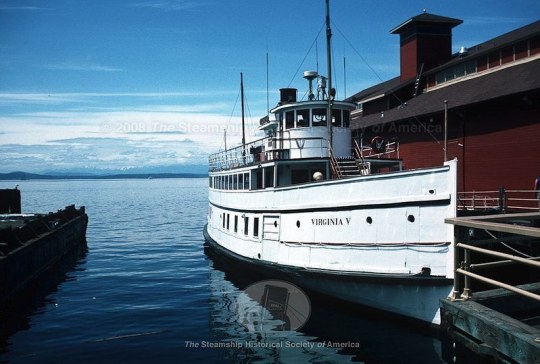
SSHSA’s 1995 Ship of the Year, the Virginia V celebrates 100 year this month! She made her first voyage on June 11, 1922 from Elliott Bay in Seattle to Tacoma. She continued to make this voyage daily until 1938. She is the last of her kind, the sole survivor of the “mosquito fleet” and has overcome odds and obstacles for years in large part through the work of the Foundation, who have themselves been through tough times, facing ill-advised maintenance and repairs, and the tedious care and feeding of a wooden hull. At the time of this award, the hull had reached crisis condition. By the mid-1980s it was clear that the hull needed major restoration to ensure continued operation. The stern and the bow were renewed, but fundraising did not allow for hull repairs. In mid-February 1996, Virginia V ceased, for the first time in her career, to be licensed to carry passengers. Instead, she steamed from time to time carrying crew only to fundraising events around Puget Sound. For the public she is available for viewing while docked. In 2002, after a six-year $6.5 million restoration, the Foundation was able to put Virginia V back in service. She now provides public excursions, private charters and visits to local maritime festivals in and around Puget Sound. Learn more at https://www.virginiav.org/ship/history/. Read this great tribute to the ship in Sea History Today at conta.cc/3tTHCOg . Image: Steamer VIRGINIA V docked on the Seattle waterfront. Photo taken May 19, 1986. Braun Brothers Collection, SSHSA Archives. See more images from this collection at bit.ly/BraunBrothers. (at The Steamship Historical Society of America) https://www.instagram.com/p/CfJ6kdusCSc/?igshid=NGJjMDIxMWI=
17 notes
·
View notes
Photo


William Barker Cushing was born in Delafield, Wisconsin, on November 4th, 1842, but spent most of his childhood in Fredonia, New York. He attended the U.S. Naval Academy from 1857 until March 1861, when his high-spirited behavior led to his resignation. The outbreak of the Civil War brought him back into the service, and he soon distinguished himself as an officer of extraordinary initiative and courage. Promoted to the rank of Lieutenant in mid-1862, Cushing served as Executive Officer of the gunboat Commodore Perry, then was given command of the tug Ellis, which was lost under heroic circumstances on 25 November 1862. He subsequently commanded the gunboats Commodore Barney, Shokokon and Monticello. During this time, he led several daring reconnaissance and raiding excursions into Confederate territories.
On the night of October 27-28, 1864, Cushing and a small crew took the Navy steam launch Picket Boat Number One upriver to Plymouth, NC, where they attacked and sank the Confederate ironclad ram CSS Albemarle with a spar torpedo. This action made him a national celebrity, and he was quickly promoted to the rank of Lieutenant Commander. In January 1865, Cushing helped lead the Navy landing force in the conquest of Fort Fisher, NC, again distinguishing himself.
Following the Civil War, LCdr. Cushing was executive officer of USS Lancaster and commanding officer of USS Maumee. Promoted to Commander in 1872, he was captain of USS Wyoming in 1873-74. In November 1873, he boldly confronted Spanish authorities in Cuba to save the lives of many passengers and crew of the steamer Virginius, which had been captured bringing men and supplies to Cuban revolutionaries. While serving as Executive Officer of the Washington Navy Yard, DC, Commander Cushing's always delicate health gave way and he died on December 17th, 1874.
#american civil war#civil war#us civil war#us navy#william b cushing#acw#history#younger brother to alonzo cushing!#i believe he's 1 year younger but you can really see it
14 notes
·
View notes
Note
How about another one. This time a Great Western:

Pendennis of Castle
[note i polyship Scotsman x Truro x Pendennis so expect that to pop up.]
Pendennis here is hot tempered and easy to anger type, the pure emotion Scot’s in-between and Truro’s calculative calm and of course one of the few engines to travel or be allocated outside of the UK and basically had a rivals to friends to lovers thing with the two.
I can’t really call them a Tsundere cause while they are standoffish and tend to be in denial of their romantic feelings i just don’t see them going as far as to call either engines anything (seriously) demeaning or do the usual shit Tsunderes usually do.
While they are indeed a Great Western engine, for this one i won’t include Duck and/or Oliver because honestly City of Truro’s already got that covered.
This imaginary episode instead has Pendennis interacting with Shane, while i there are obvious historical inaccuracies for the purposes of this story lets pretend it happened and/or is possible :]
so you know how Pendennis Castle was in Australia for like a while yeah thats how that happens. So Pendennis is physically and mentally not in the best shape at this time and is just generally not having a fun time, Shane notices that “Hey this newly acquired engine isn’t doing too good let me do a check on them.” and he does but Pendennis gets really defensive and snappy with Shane and he kinda backs off for a while to wait.
He comes back when most of their repairs are done and it’s like a couple days or hours before they get moved, Shane tries to get a bit of small talk out of Pendennis and they are surprisingly a little more nicer this time around, so the two chat about origin stories and it’s mainly Shane getting interested in the castle’s stories about the GWR.
A couple excursions later they end up meeting Shane again and he’s like “Aight so this OTHER British locomotive is gonna come to here.” and Penny just shrugs it off cause they are also a British locomotive that came to here and y’know other steamers from the UK have made trips to like the US or something and then they ask who the visitor is and Shane’s like “Oh Britain’s most famous steam locomotive!”
Pendennis then realises that oh shit, Flying Scotsman aka the crush they have constantly denied their romantic feelings towards to is coming to Australia.
When Shane sees that shocked look on Pendennis he’s like “You know him?” “OF COURSE I DO HE WAS MY RIVAL!”
and then they leave.
Before the tour but after Pendennis knows they are approached by 3801 who is basically Australia’s Flying Scotsman because “Oi so 520 told me that you know a little bit on Scot so i’m mainly approaching you to know what to expect from them.”
“Expect him to not stop talking.” they say, 3801 couldn’t place their tone but he swore he could hear just the smallest bit of affection in that.
“Is that it?”
“Yes.”
It’s basically a ‘I’m gonna finally confess to my crush after like years of waiting’ moment so when the two finally meet again they’re both just being sad emotional saps to each other.
When Soctsman says that he's a thing with Truro, Pendennis is obviously a bit sad but also understanding and then Scot also puts forth the idea of the Three of Them being a thing. And like, Yeah I guess I'm gonna become a thing with Scot and Truro.
The (temporary) goodbye stings of course, they don't know if they're Ever going to go back.
Come the time where they Do go back they're also a bit sad cause they struck a small friendship with the locomotives in Australia like Shane and the many Diesels they'd encountered. They promise that they'll try to keep in contact with them if possible maybe send a letter or two.
This is already getting long so let's just say that they went on a couple dates with Truro and then they finally become a throuple but obviously becomes a long distance one.
#answer#ttte#Pendennis Castle#ttte shane#wow this was longer than expected i just wrote a whole chapter for a story
15 notes
·
View notes
Photo
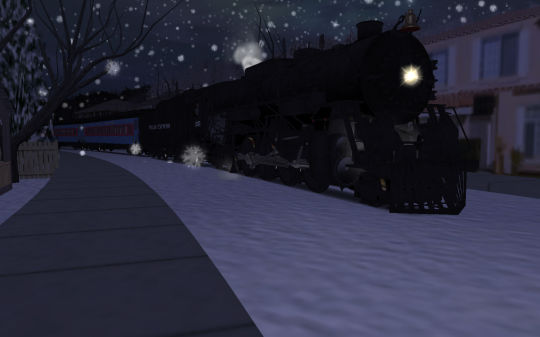
Day 25: The Polar Express
Merry Christmas!
Info from The Polar Express Wiki, I've already gone over the story from last year. This one is mainly covering the info of the locomotive
The Polar Express is the titular magical 2-8-4 wheel configured American Berkshire type steam locomotive that transports children to the North Pole on Christmas Eve. The locomotive pulls five passenger cars (however, some scenes show the train with more or less), including an abandoned toy car at the front and an observation car at the back.
The train makes two stops in Grand Rapids, Michigan to pick up Hero Boy and Billy the Lonely Boy respectively. Later in the film, Smokey and Steamer, the locomotive's fireman and engineer, have to fix the light, so Hero Girl is put in charge of driving. Suddenly, Smokey and Steamer see something ahead on the track and call out to Hero Girl to stop the train, but she and Hero Boy have trouble figuring out which lever applies the brakes. Eventually, Hero Boy applies the brakes and the train stops just before it crashes into a huge herd of Caribou.
After the caribou get out of the way, Smokey and Steamer get back to the cab of the locomotive and get the train on its way again. However, Steamer finds the throttle is jammed due to a loose pin, causing the train to accelerate uncontrollably. Because of this, the Conductor ties Hero Boy and Hero Girl to the safety bar at the front of the locomotive to prevent them from falling off as they go down Glacier Gulch. The pin falls out and into an air vent, but comes out when the train goes down the gulch. Steamer manages to catch it with his mouth, only to swallow it by accident. When the train ends up on the Ice Lake, Smokey manages to get the pin out of Steamer's stomach by hitting his back with a shovel, but it works too well as the pin flies out of the locomotive and lands on the ice, causing it to crack. The train crashes through an iceberg and leans sideways. Smokey eventually decides to use the pin from his hair to fix the throttle and Steamer is able to control the speed again. Everyone soon notices the cracking ice, so Smokey and Steamer try to get the train back on the tracks with the Conductor navigating and succeed.
The Conductor, Hero Boy, and Hero Girl later climb along the locomotive to get back to the passenger cars.
The Polar Express in the film is based on the Pere Marquette 1225, a 1941 Berkshire N-1 class 2-8-4 locomotive built at the Lima Locomotive Works. The locomotive's design was used in the film, as well as its sounds, with the exception of its whistle, which came from Sierra Railway No. 3. Drawings of the locomotive were used to create the 3D model. Chris Van Allsburg chose this design because he used to play on the locomotive while attending games at the Spartan Stadium in East Lansing, Michigan, where it was placed on static display at the time.
Today, the 1225 is housed in Owosso, Michigan and is operated and maintained by the Steam Railroading Institute. The 1225 frequently hauls passenger excursions in Michigan throughout the year, including the world-famous North Pole Express trips throughout the months of November and December.
In both the original book and the film adaptation, the Polar Express is painted black along with its tender. Its tender in the film also has the words "Polar Express" in white on both sides, something which is not in the book.
In some merchandise, the words on the tender are yellow instead of white. The locomotive is also often depicted with the number 1225, always in the same color as the words on the tender, under its side cab windows, like Pere Marquette 1225, but no number appears in neither the book nor the film.
Models and Route by: K&L Trainz, Auran, and Download Station
#Polar Express#The Polar Express#Pol Ex#Steam Locomotive#Trains#Trainz Simulator#Advent Calendar#Christmas#Christmas 2022 🎄🎅🎁
4 notes
·
View notes
Text






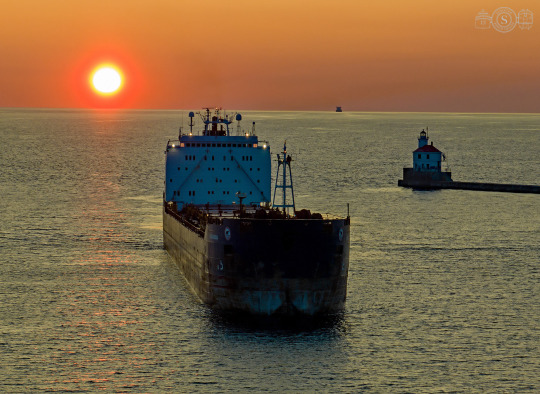
Today in Great Lakes shipping history June 12th.
1900: TASHMOO (steel side-wheel excursion steamer, 308 foot, 1,344 gross tons, built in 1900, at Wyandotte, Michigan) entered regular service for the White Star Line at Detroit, Michigan, on 12 June 1900.
1900: On 12 June 1900, the UNIQUE (wooden propeller, 163 foot, 381 gross tons, built in 1894, at Marine City, Michigan) was sold at public auction at St. Clair, Michigan to satisfy a mortgage. W. J. Laidlaw of Ogdensburg, New York purchased her for $20,000 for the Rapid Transit Co. to run between Ogdensburg and Kingston, Ontario. In 1904, her upper cabins were removed and she was rebuilt as a yacht. She lasted until 1915, when she burned in New York City harbor.
1917: CARL D. BRADLEY (Hull#718) cleared Lorain, Ohio, in her gray and white livery in 1917, on her maiden voyage light bound for Calcite, Michigan, to load limestone. She was the first Great Lakes commercial ship equipped with both Morse code telegraphy as well as ship-to-shore radio in 1922, which was standard on only 20 vessels by 1924.
1959: the BENSON FORD ran aground in the Amherstburg Channel on her upbound trip with coal for the Rouge Plant. After five days of lightering and with tug assistance, she was freed. Damage amounted to 41 bottom plates, which took 30 days to repair.
2023: Shades of pink and purple welcome in American Integrity as the footer arrives Duluth for fuel.
2023: Algoma Guardian heads inbound the Superior Entry at sunrise.
2023: Burns Harbor, visible on the horizon, departed shortly before the Guardian made her entrance.
Boat Nerd
17 notes
·
View notes